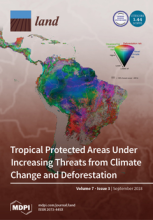Land Library Search
Through our robust search engine, you can search for any item of the over 73,000 highly curated resources in the Land Library.
If you would like to find an overview of what is possible, feel free to peruse the Search Guide.
/ library resources
Showing items 1 through 9 of 101.This study assesses the global mountain population, population change over the 1975–2015 time-range, and urbanisation for 2015.
Chile has embraced the expansion of monoculture forest plantations of exotic Monterey pine and eucalyptus as part of its development strategy.
The process of population concentration in cities is a worldwide phenomenon—not yet finished—which has led to a widespread rural exodus and abandonment of rural areas. In Spain it occurred very abruptly from 1960, leaving numerous population centers abandoned in the northern half of the country.
The demand for energy has been growing worldwide, especially in India partly due to the rapid population growth and urbanization of the country. To meet the ever-increasing energy requirement while maintaining an ecological balance is a challenging task.
Agricultural expansion and intensification enabled growth of food production but resulted in serious environmental changes. In light of that, debates concerning sustainability in agriculture arises on scientific literature.
One of the major consequences of expansive urban growth is the degradation and loss of productive agricultural land and agroecosystem functions.
This revised agricultural policy and strategic framework provides a coherent policy framework to address the key challenges in Timor-Leste. The Government recognizes that there is no simple "solution by technology".
The Youth Agribusiness Strategy is a sectoral national strategy of Kenya for the period of 2017-2021. Its main objective is to address challenges that hinder youth from participating effectively in the sector.The Strategy also seeks to make agriculture more productive and sustainable.
Le Plan de Développement Économique et Social (PDES) 2017-2021 est un plan quinquennal de l’opérationnalisation de la Stratégie de Développement Durable et de Croissance Inclusive (SDDCI) Niger 2035 adoptée par le Gouvernement le 9 mai 2017.






